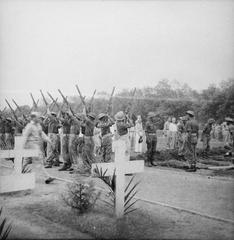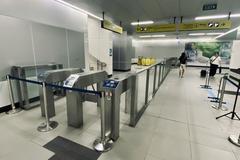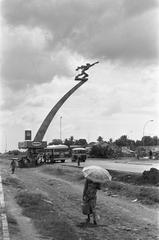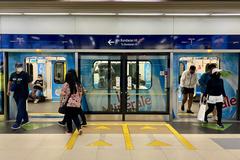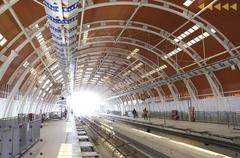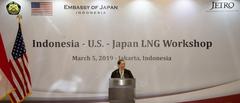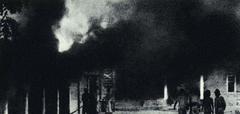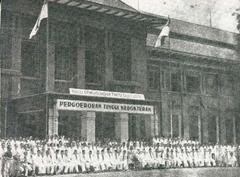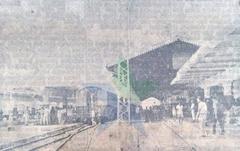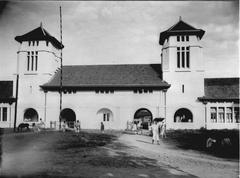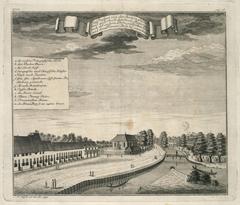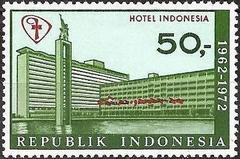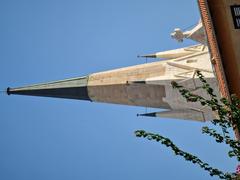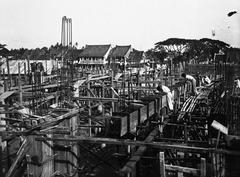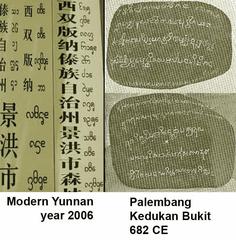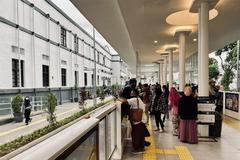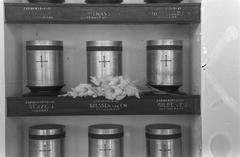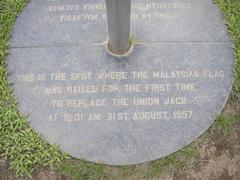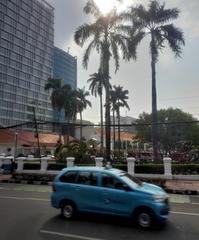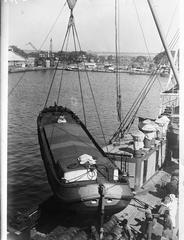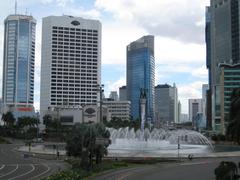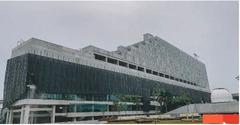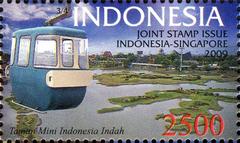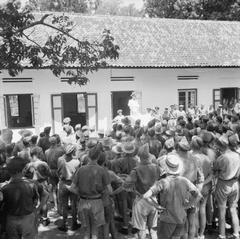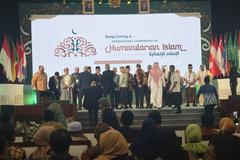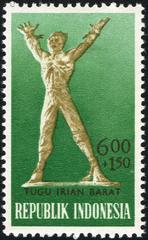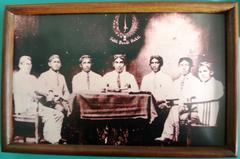Comprehensive Guide to Visiting Museum Bank Indonesia, Jakarta, Indonesia
Date: 17/07/2024
Introduction
Located in the bustling heart of Jakarta, the Museum Bank Indonesia offers an intriguing journey through the nation’s financial history (Museum Bank Indonesia). Housed in a historic building that dates back to 1828, originally serving as the headquarters of De Javasche Bank, the museum is more than just a repository of banking artifacts. It stands as a testament to Indonesia’s colonial past, its journey towards independence, and its modern financial evolution. This comprehensive guide will provide visitors with all necessary information, from the museum’s fascinating history and architectural significance to practical details like visiting hours, ticket prices, and travel tips. Whether you are a historian, a finance enthusiast, or a curious traveler, the Museum Bank Indonesia promises a rich, educational, and engaging experience.
Table of Contents
- Introduction
- History of Museum Bank Indonesia
- Architectural Significance
- Exhibits and Collections
- Visitor Information
- Role in Education and Research
- Cultural and Social Impact
- Future Developments
- Conclusion
- FAQ
History of Museum Bank Indonesia
Origins and Establishment
The Museum Bank Indonesia is housed in a historic building that dates back to the early 20th century. Originally constructed in 1828, the building served as the headquarters of De Javasche Bank, the central bank of the Dutch East Indies. The architectural style of the building is a blend of neo-classical and colonial designs, reflecting the European influence on Indonesian architecture during the colonial period. The building’s historical significance is further underscored by its role in the financial history of Indonesia, making it an ideal location for a museum dedicated to the country’s banking history.
Transition to Bank Indonesia
In 1953, following Indonesia’s independence from Dutch colonial rule, De Javasche Bank was nationalized and transformed into Bank Indonesia, the central bank of the Republic of Indonesia. This transition marked a significant shift in the country’s financial landscape, as Bank Indonesia took on the role of managing the nation’s monetary policy, issuing currency, and overseeing the banking sector. The building continued to serve as the central bank’s headquarters until 1962, when Bank Indonesia moved to a new location.
Conversion into a Museum
The idea to convert the historic building into a museum was conceived in the early 2000s. The goal was to preserve the architectural heritage of the building while creating a space that would educate the public about the history of banking in Indonesia. The restoration and conversion process was meticulous, aiming to retain the building’s original features while incorporating modern museum facilities. The Museum Bank Indonesia officially opened its doors to the public on July 21, 2009.
Architectural Significance
The building itself is a masterpiece of colonial architecture. The façade features grand columns and intricate carvings, while the interior boasts high ceilings, marble floors, and ornate woodwork. The preservation of these architectural elements was a key focus during the building’s conversion into a museum. Visitors can still see the original bank vaults, teller counters, and other features that provide a glimpse into the building’s past as a bustling financial hub.
Exhibits and Collections
The Museum Bank Indonesia offers a comprehensive overview of the country’s banking history, from the colonial era to the present day. The exhibits are organized chronologically, starting with the establishment of De Javasche Bank and its role in the Dutch East Indies. One of the highlights of the museum is the collection of old banknotes and coins, which showcases the evolution of Indonesian currency over the years. The museum also features interactive displays and multimedia presentations that provide an engaging and educational experience for visitors.
Visitor Information
Visiting Hours and Tickets
Museum Bank Indonesia is open from Tuesday to Sunday, 8:00 AM to 4:00 PM, and closed on Mondays and public holidays. Ticket prices are very affordable, with a standard ticket costing IDR 5,000 for adults and free entry for children under 12 years old and students with valid ID. Group tours and guided tours are available upon prior request.
Travel Tips
The museum is located in the heart of Jakarta’s historic district, making it easily accessible by public transport or taxi. Nearby attractions include the Jakarta History Museum and the Fine Art and Ceramic Museum, making it convenient to plan a day of cultural exploration.
Role in Education and Research
In addition to its role as a public museum, the Museum Bank Indonesia also serves as a center for education and research. The museum offers a range of educational programs and workshops aimed at students, researchers, and the general public. These programs cover various aspects of banking and financial history, providing valuable insights into the economic development of Indonesia. The museum’s library and archives are also accessible to researchers, offering a wealth of information on the history of banking in Indonesia.
Cultural and Social Impact
The Museum Bank Indonesia has had a significant cultural and social impact since its opening. It has become a popular destination for both local and international visitors, attracting thousands of people each year. The museum’s exhibitions and programs have helped to raise awareness about the importance of banking and financial literacy, contributing to a better understanding of the country’s economic history. The museum also plays a role in preserving Indonesia’s cultural heritage, ensuring that future generations can learn about and appreciate the country’s rich history.
Future Developments
Looking ahead, the Museum Bank Indonesia plans to continue expanding its exhibits and programs. Future developments include the introduction of new interactive displays and the addition of more artifacts to the museum’s collection. The museum also aims to enhance its educational offerings, with plans to introduce new workshops and seminars on various topics related to banking and finance. These initiatives will help to ensure that the Museum Bank Indonesia remains a dynamic and engaging institution for years to come.
Conclusion
The Museum Bank Indonesia is not just a repository of historical artifacts but a vibrant educational and cultural hub. Whether you’re keen on learning about the history of banking in Indonesia or simply interested in experiencing its architectural beauty, the museum offers something for everyone. Don’t miss the opportunity to explore this Jakarta historical site on your next visit. For more information, you can visit their official website here.
FAQ
What are the visiting hours of Museum Bank Indonesia? Museum Bank Indonesia is open from Tuesday to Sunday, 8:00 AM to 4:00 PM, and closed on Mondays and public holidays.
How much do tickets cost? Standard tickets cost IDR 5,000 for adults. Children under 12 years old and students with valid ID can enter for free.
Are there guided tours available? Yes, group tours and guided tours are available upon prior request.
What are some nearby attractions? Nearby attractions include the Jakarta History Museum and the Fine Art and Ceramic Museum.
Where can I find more information? For more information, you can visit the official website here.
References
- Museum Bank Indonesia. (n.d.). Bank Indonesia. https://www.bi.go.id/en/others/museum-bi/Default.aspx

